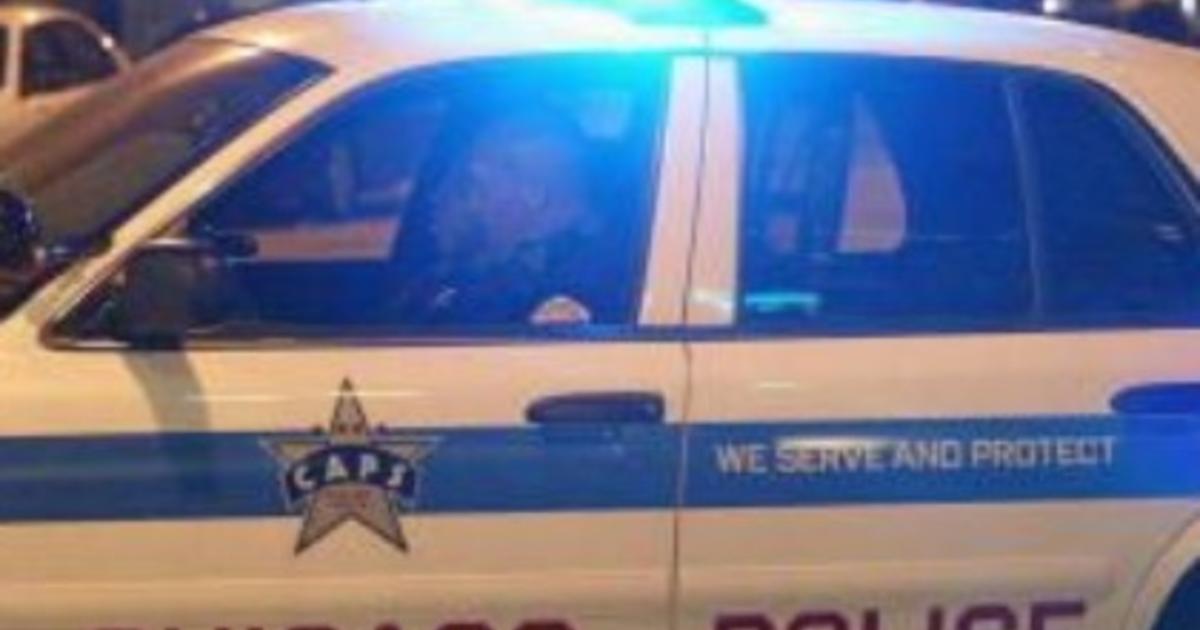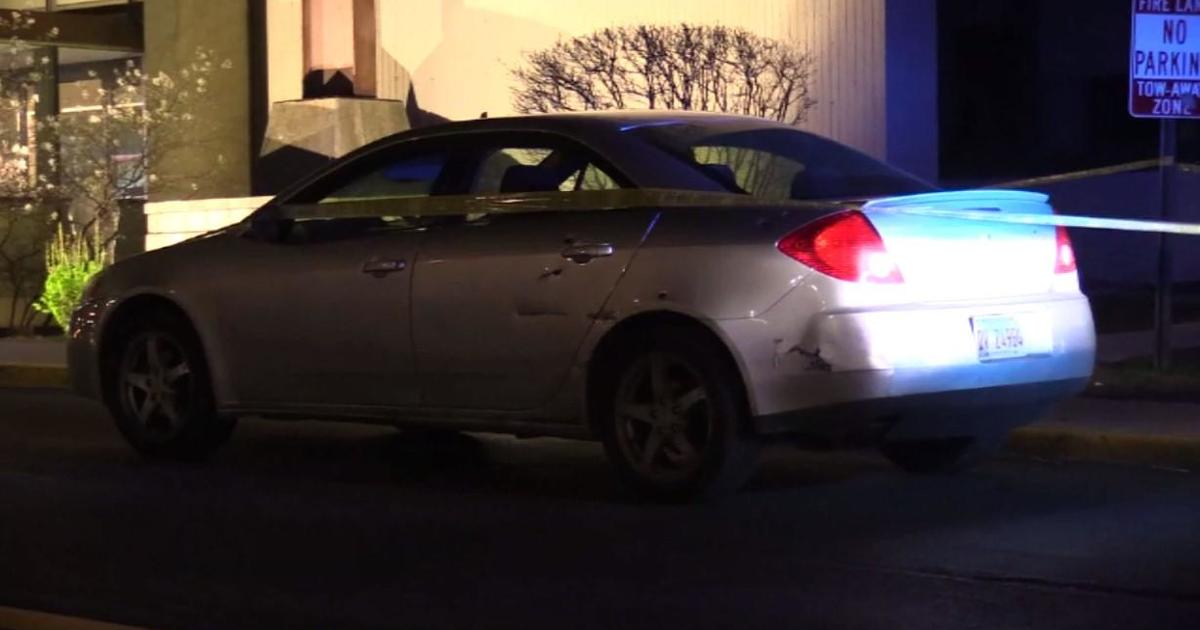Local Residents Reminisce On North Shore Line
CHICAGO (CBS) -- There was a time when you could hop on a train at certain North Side 'L' stations, sit down in a tavern-lounge car, order a drink and eat a freshly-cooked hamburger as you rode to Milwaukee at up to 90 miles an hour.
That's Milwaukee as in Wisconsin, not the Northwest Side street.
State Trooper Honored
All of that came to an end 50 years ago, early on the bitterly cold morning of Jan. 21, 1963. Most businesses that shut down half a century ago are long ago forgotten, but not the North Shore Line.
Rail historians have called the Chicago North Shore & Milwaukee Ry. the "standard interurban of the world," borrowing a phrase that was once used to describe the old Pennsylvania Railroad.
Not only were its trains fast, but the railroad thrived on innovation. It sold joint tickets with steamship companies and airlines, as well as other railroads. It pioneered the movement of truck trailers on flatcars, a practice that is common today.
When the lakefront suburbs became too built up to allow for high-speed operation, it built a high-speed bypass five miles to the west – and opened up whole new areas to suburban development in communities such as Skokie, Wilmette, Northfield, Northbrook, Deerfield and Lake Forest.
As early as 1908 it boasted full dining car service and by the early '20s operated open-ended parlor-observation cars that were the last word in rail comfort. Later, its air-conditioned Electroliners provided a break from summertime heat long before auto air conditioning and more than 20 years before Chicago's first air-conditioned 'L' cars.
Decades before the Obama Administration began talking about speeding up Amtrak, the North Shore was a railroad without speed limits – just occasional restrictions.
"There was something in the air about the North Shore," said Tom Jervan, who rode its streetcars in Waukegan as a child and later worked for the railroad. "There was a period in the existence of that railroad where it was the super-interurban in the country. It was the fastest. It had the facilities like nobody else had. It did everything in superlatives."
The record bears Jervan out. The North Shore received numerous accolades from industry peers in its time, and perhaps the most impressive were the speed trophies it won repeatedly in the 1920s and 1930s as the fastest railroad of its kind. In fact, when the North Shore won the award three years in a row in the early '30s, the award was retired.
It won the speed awards despite the handicaps of running over the 'L' south of Howard Street, in Chicago, and on the streets of Milwaukee for the last few miles into its downtown terminal. Those last few miles were typical of interurbans, an electrically-operated type of railroad popular 100 years ago that generally ran through city streets, resorting to private right-of-way between towns.
Many interurban lines were relatively slow because of that street running and succumbed easily once automobiles became cheap and roads plentiful. The North Shore hung on for much longer, although the opening of the Edens and Kennedy Expressways both proved to be damaging, in an era before transit subsidies.
It was helped by its proximity to two important military installations – Naval Station Great Lakes and Fort Sheridan. To the end, recruits bound to and from Great Lakes filled the North Shore's trains, requiring special runs on a regular basis.
Even in its final months, the North Shore operated expresses that hit 80 miles an hour between stations on the main line, the Skokie Valley Route, to Waukegan and on a branch to Libertyville and Mundelein, in addition to the limiteds that ran hourly from 6 a.m. until midnight to and from Milwaukee. The two top-of-the-line Electroliners ran every three hours, back and forth between Chicago and Milwaukee. Much of the line was served by four trains an hour, meticulously cleaned and cared for.
"There was an espirit d'corps," Jervan said at a reunion of North Shore employees, the most recent of which took place in November. "We kept the darned thing running. Our on-time performance was usually around 95 or 96 percent. In your dreams, Amtrak. In your dreams, Metra."
At its peak, the North Shore reported 99.26 percent on-time performance, and it did so with equipment that, except for the two 1941-vintage Electroliners, pre-dated the Great Depression.
"Our oldest rolling stock was built in 1915," Jervan said. "They were all still running, racking up in many cases millions of miles each. The Highwood shop, if you were to look at that shop and compare it with a modern (railroad repair) shop, you'd say, 'How did anybody get any work done in this prehistoric cave?'"
The commuters who rode the North Shore were loyal – more than 4 million even in its final year. When the North Shore first proposed abandonment in 1958, a commuters' association formed that raised money to try to buy the railroad. The group raised more than $1.5 million, through donations that were often a nickel or a dime at a time. The North Shore's parent company, the Susquehanna Corp., demanded $6.2 million for the 89-mile railroad. Efforts to reopen the line continued for a number of months after it shut down, but proved to be unsuccessful.
Today, that $6.2 million couldn't even begin to build the short proposed Yellow Line extension from Dempster Street to Old Orchard Road in Skokie which, like the Skokie Swift itself, would travel on the North Shore's old right-of-way.
The North Shore used to boast in its advertisements that you could set your watch by its trains. Jervan said snow never stopped the North Shore for long. Neither did bitter cold. And he said its trains moved up and down the line with dispatch. Its trains never sat in stations.
"The dwell time (time stopped) at our stations was negligible," he said. "The dwell time that Metra has at its stations is a total joke. In this time and age, in the 21st Century, they need to look back at an interurban line that ran with cars built in 1915 on how to run a railroad."
Noted rail historian Norman Carlson said if the North Shore has a lasting legacy, it may be the emergence of federal transit assistance. The CTA's Skokie Swift start-up in 1964, using former North Shore tracks, received the first federal transit demonstration grant, the forerunner of the federal operating and capital subsidies in the decades since.
The Yellow Line is the only operating remnant of the North Shore, but many of its historic interurban cars still can be found today in museums, including the Illinois Railway Museum, in Union, which has more than a half-dozen operating North Shore cars and one of the Electroliners. The Fox River Trolley Museum, in South Elgin, has two operable North Shore cars and Wisconsin's East Troy Electric Railway Museum is restoring a North Shore "Limited" car. Other North Shore cars reside in museums as far away as Iowa, Connecticut and Maine.



